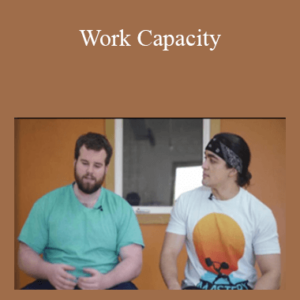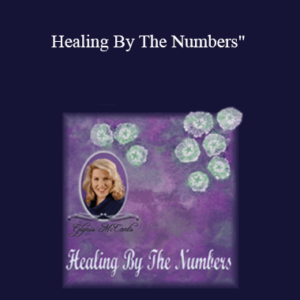[Download Now] Advances in Treating Spinal Instability: The Kinetic Chain Impact – Sue DuPont
Sale page_https://catalog.pesi.com/item/34295/
Archive: https://archive.fo/fVyUe
The Next Level of Spinal Education
Nearly 80% of adults will experience Low Back Pain, (LBP) and seek care in outpatient clinics. Evidence has been inconclusive for the best treatment techniques – especially for spinal stabilization programs. However, new research from electromyography (EMG) studies has provided an improved understanding of how functional movement, muscle imbalances, and ineffective load transfer through the lumbo-pelvic-hip complex increase risk of injury along the entire lower kinetic chain.
Explore the role of movement and muscle imbalances on pain and dysfunction in the spine and lower extremities by using gait, posture, functional movement analysis, and simple clinical tests. Identify true lumbar instability, myofascial sling, and joint dysfunctions that may be contributing to your patient’s pain. Discover the latest clinical prediction rules for LBP to guide your treatment planning, and incorporate manual therapy, stabilization, and exercise into your treatment.
Take core, balance, and proprioceptive training to the next level with an interactive, hands-on lab — learn manual techniques to rebalance tissue dysfunctions and how to develop an effective corrective exercise program utilizing inexpensive equipment such as foam rollers. With a more focused approach you will get better outcomes in less time — and you and your patient will have fun in the process!
- Identify possible structural and functional contributors to back and lower extremity pain and injury
- Describe a systematic approach to assess static and dynamic posture and functional movement
- Differentiate movement dysfunctions by their myofascial or synergistic patterns
- Evaluate new manual therapy techniques for rebalancing tissue dysfunctions
- Compare clinical tests for spinal instability
- Compare effective corrective exercise progressions for treating instability using easily accessible equipment and techniques
INTRODUCTION
BACK PAIN: WHY IT’S A PROBLEM
- Biotensegrity: The Anti-Gravity Model
- Role of the “Core” stiffness or movement?
- Myofascial connections and their role in stabilization and function
LAB #1 — MYOFASCIAL MOBILIZATIONS
BACK PAIN: ARE WE CHASING THE PAIN?
- Structural vs. functional pathology
- Effects of sustained postures and forces
- Effects of chronic pain and dysfunction on movement
WHAT IS SPINAL INSTABILITY?
- Ambiguity of term spinal instability
- Disconnect between medical diagnosis and clinical signs and symptoms
- Historical perspective of spinal instability
- Muscle dysfunction and lumbar spinal instability
- Functional vs. pathological muscle imbalances
- Rehab goal for muscle imbalances
KINETIC CHAIN REHAB FOR FUNCTIONAL MOVEMENT
- Kinetic chain rehab principles
- Functional coupling between muscles and fascia
- Components for optimal functional movement
- Myofascial slings and common dysfunctions
- Biomechanical link between lower kinetic chain and spinal instability
IS SPINAL INSTABILITY JUST ABOUT STIFFNESS?
- Static vs. dynamic spinal instability
- Synergist, agonist, and antagonist effects of muscles and force vectors
WHERE ARE WE NOW?
- Motor control vs. general exercise
- Clinical prediction rules for back pain
- Influence of posture and body type
- Muscle sling dysfunctions – “Gluteal Amnesia,” Quadratus Lumborum Syndrome, etc.
- Importance of dynamic functional movement analysis
LAB #2 – POSTURE, ROM, & MUSCLE LENGTH
SPINAL INSTABILITY: CLINICAL PRESENTATION & OBSERVATIONS
- Patient case studies
- Finding myofascial imbalances and compensatory patterns
- Best clinical tests for spinal instability
- Clinical “pearls” for determining weak quadrant
LAB #3 — DYNAMIC FUNCTIONAL MOVEMENT OBSERVATIONS & CLINICAL ANALYSIS
CORRECTIVE EXERCISE PROGRESSIONS FOR SPINAL INSTABILITY
- Motor control of local stabilizers
- Adding tri-planar stabilization
- Turning on the gluteal muscles
- Progression of Spinal Stabilization Exercises
- EMG evidence-guided progressions
- Adding equipment and unlevel surfaces
- 5 functional tasks to ALWAYS include
LAB #4 — PRACTICE CORRECTIVE EXERCISE PROGRESSIONS LIVE CASE STUDY
- Identify and develop a treatment plan
- Myofascial sling dysfunction and spinal instability
RESOLUTION
Tag: Advances in Treating Spinal Instability: The Kinetic Chain Impact – Sue DuPont Review. Advances in Treating Spinal Instability: The Kinetic Chain Impact – Sue DuPont download. Advances in Treating Spinal Instability: The Kinetic Chain Impact – Sue DuPont discount.
Delivery Method
– After your purchase, you’ll see a View your orders link which goes to the Downloads page. Here, you can download all the files associated with your order.
– Downloads are available once your payment is confirmed, we’ll also send you a download notification email separate from any transaction notification emails you receive from coursesblock.com.
– Since it is a digital copy, our suggestion is to download and save it to your hard drive. In case the link is broken for any reason, please contact us and we will resend the new download link.
– If you cannot find the download link, please don’t worry about that. We will update and notify you as soon as possible at 8:00 AM – 8:00 PM (UTC 8).
Thank You For Shopping With Us!







